Facilitation techniques
Ideas to try out and shake-up your thinking.
A vision for the future
Try this technique to create the future you want for your team, department or organisation. Imagine this day either one, two or five years away. Use these prompts to create a your vision:
Where are you?
Who is with you?
What team traits have been amplified?
What team traits have diminished?
How do you feel at the end of the day?
How do you want your team to feel at the end of the day?
What commitment can you make now that will help start you on this journey?
A turn of phrase
First posted by Dr Jacqueline Antonovich (@jackiantonovich), turning a question around can draw out more from the people you really want to hear from.
Try turning ‘Any questions?‘ around to ‘What questions do you have for me?‘
How to get people to actually participate in virtual meetings
by Justin Hale and Joseph Grenny for the Harvard Business Review
Master the three ways to influence people
Use the Head, Heart, or Hands
From the Center for Creative Leadership
Making the most of the Zoom chat box
In an online meeting, supporting people to be heard can be difficult. There are fewer cues to chip in, and the more people in the Zoom room, the more mini screens there are to keep in sight.
The chat box is brilliant way to help guide input and steer conversation. Try these questions to stimulate reflection and fuel your discussions at the start, mid-point or end of your meeting:
What values do we have that should shape how we respond to this?
What 3 words capture the impact we want this to have on others?
What’s most important here?
Bring a different perspective to your next meeting
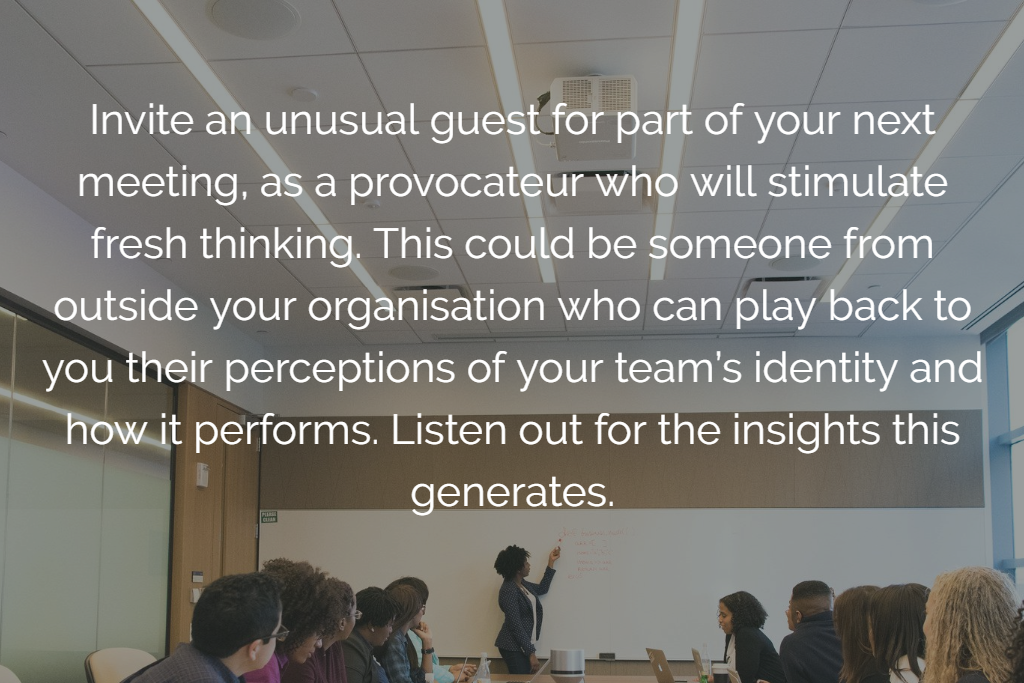
Questions to help make the big decisions
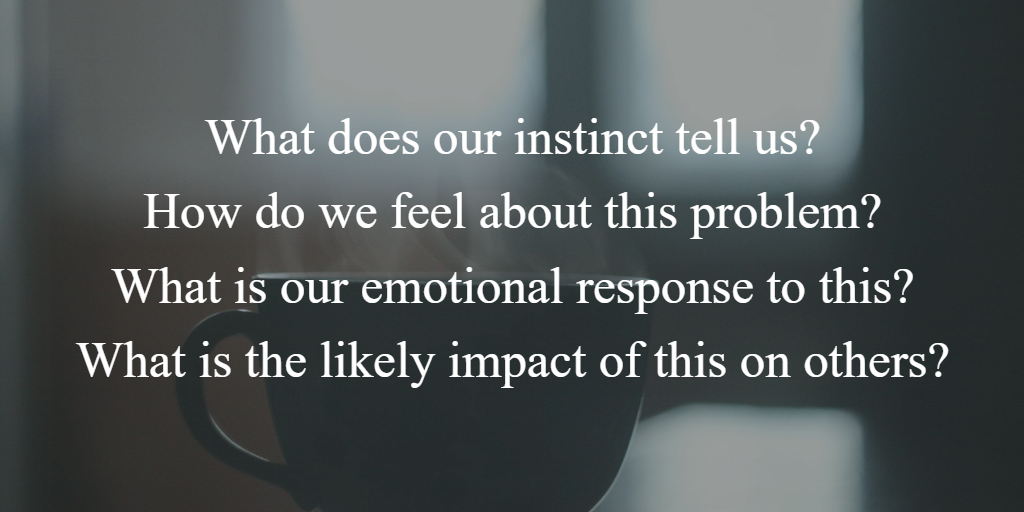
3 Questions to start your next meeting with

Face the fear of not knowing. Ask yourself:

Thinking about the future?
Reconnect with the stories that shaped your business, and find new ways to tell them for new generations. 12 conclusions to think about when you want to tell your organisation’s story, from John Simmons, Invisible Grail Director and co-Founder.
Productive meeting: an oxymoron?
5 techniques to help make your meetings more productive, purposeful and maybe even fun
A technique to plan for feedback conversations
Make a list of 4 or 5 colleagues who might benefit from your feedback.
For each colleague, think of three instances in the recent past (preferably the last week, if possible) which were significant because there would have been better-quality outcomes if they had handled them differently. Then, for each example you have identified, note the exact behaviour you observed (this may include quoting some of the language you heard), and – most importantly – the impact it had.
How difficult was this task? It’s unlikely that you will readily bring examples to mind, unless you’re used to gathering evidence to use in feedback. You may find it tough to recall enough details of a situation in which you may have been deeply involved yourself. It does take practice – and is likely to be worth the effort, once you make a habit of it!
The next step is to make use of the evidence you have built up, by giving feedback to at least one of the people on your list.
The first time you try using this, choose a single example and relate this to a setting which you need to discuss in any case. This might be a particular project, task or relationship you’ve already agreed to talk about.
This is a technique adapted from Staying Truly Connected, a 13-hour online programme for anyone leading people remotely, now available in-house (find out more, email Academic Director Paul Gentle).

On figuring out who you are, as a team
3 questions to help distil the narrative of your team
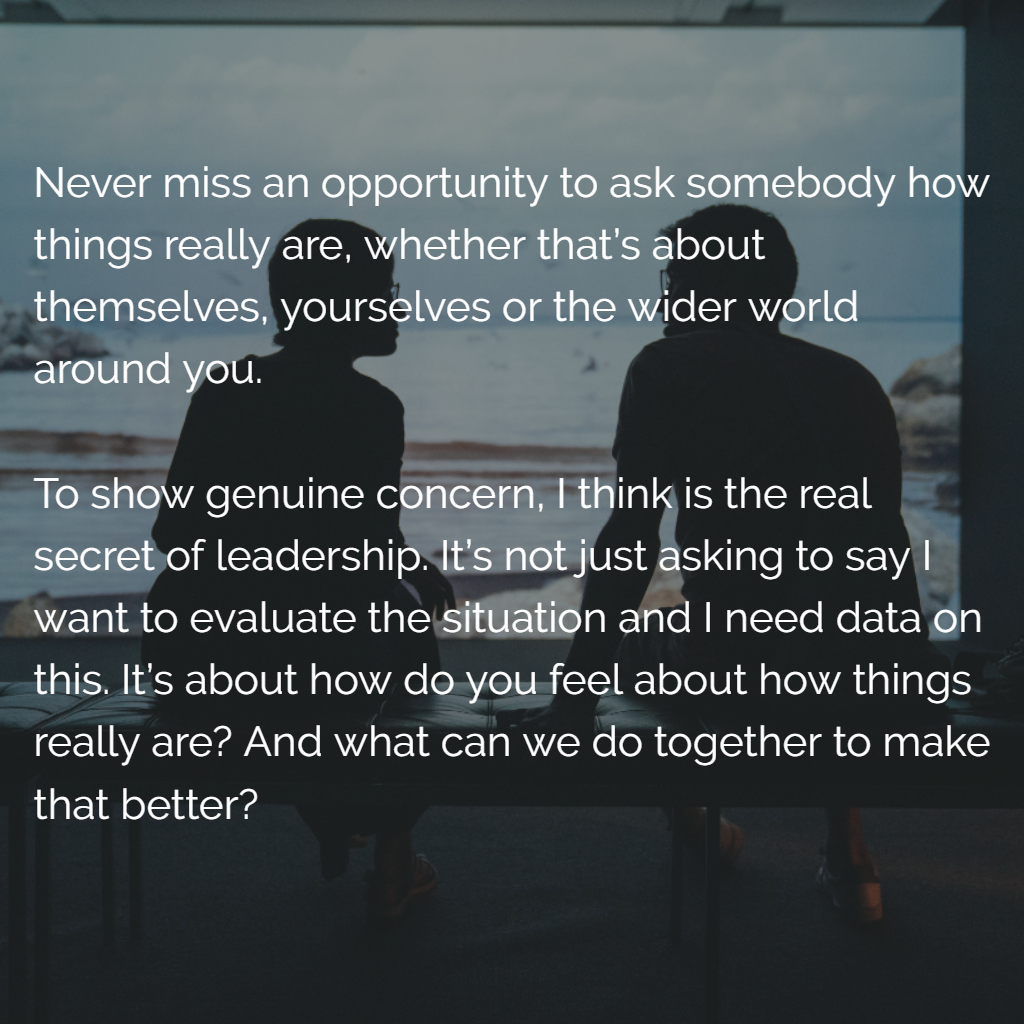
Building trusting cultures at work
From an interview with Dr Paul Gentle, Academic Director at Invisible Grail.
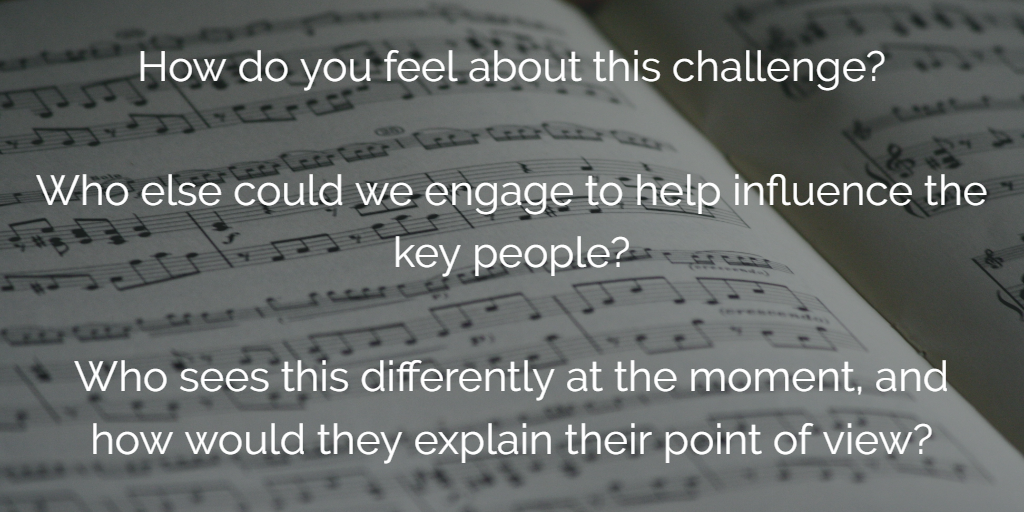
How to influence well
Engage your own, and others, curiosity. Try these questions, from ‘Influence…and how you do it‘ by Dr Paul Gentle, at Invisible Grail.

A technique to shed new light on your own or others’ thinking
This technique works well in a one-to-one conversation, or in a meeting when you can ask people to work in pairs.
A technique to nurture a culture of feedback and openness
As Keith Grint and others have emphasised, questions which stimulate insight are part of a leader’s capability set. If you want to nurture a culture of feedback and openness, try starting with this question:
“If there were just one thing I could work on that would improve how I …, what would it be?”
A technique to draft a team leadership manifesto
When you want to bring people together and articulate what matters to you, what you stand for and who you, as a team are, as a collective, try this technique.
Choose one prompt from each of the 4 categories below. Ask your team to respond to the prompts chosen, and share these with each other before distilling your manifesto to just a short sentence in answering each prompt.
Identity – who are we as a team?
- What are our traits as a team?
- Who are we not?
- What’s surprising about us as a team?
Beliefs – what do we believe in?
- What are our values?
- What are we here to do?
- What are our priorities?
Practices – how we work together
- What are our commitments to levity?
- What are our commitments to creativity?
- How do we find balance?
Use this manifesto as a template that you can update, refresh, reimagine as your team and the context you’re working in changes. You might find that responses change depending on whether you’re working from home or in the office, or simply as priorities change.
This is a technique adapted from Staying Truly Connected, a 13-hour online programme for anyone leading others remotely, now available in-house (find out more, email Academic Director Paul Gentle).
Feedback on meetings
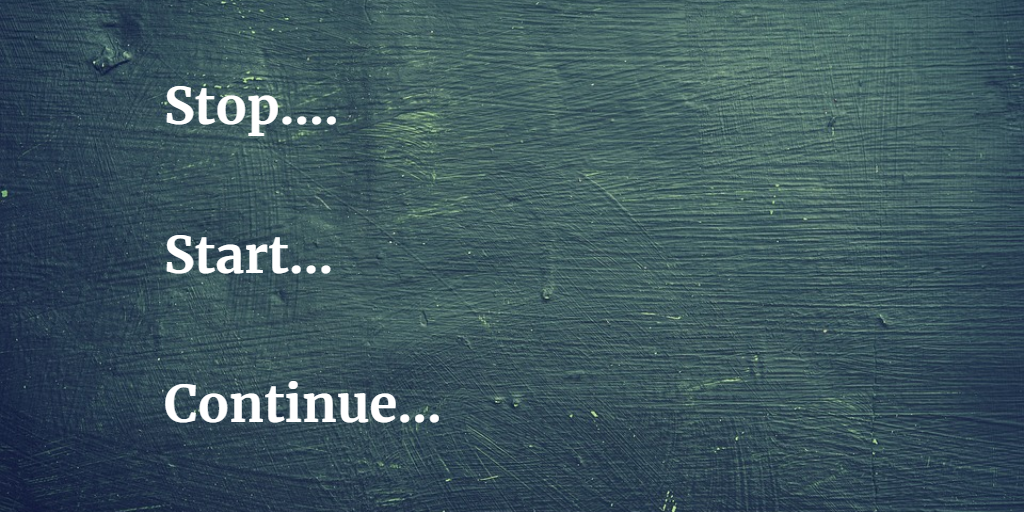
A meeting ice breaker

4 questions to think about your professional purpose
What energises me?
What comes easily to me?
What do people come to me for?
How am I when I’m at my best and what really matters to me about this situation and why?
From Helen Teague’s blog ‘What do you want to be when you grow up?‘. Helen is our OD expert at Invisible Grail.
A 10-minute activity: a new way to think about the future
Here’s an activity to generate ideas in a group for the future direction of an organisation or department. Ask each member of the group to think individually of a response to the following question:
If you could ask one question of an all-seeing Oracle who knows everything about the future of our department/organisation, what would it be?
Invite people to tell the group their answers. Note the range of ideas put forward, which are likely to include quantifiable measures of performance, imaginative visions and reflections of people’s values.
Next, ask everyone to think of what they would ask if they had a second question. After hearing what everyone says, it might be worth reflecting on differences between the two rounds of responses.
5 ideas to reconnect you to your message